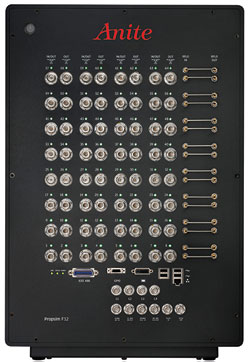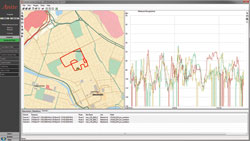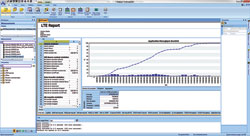
Figure 1 The Propsim F32.
Live testing of devices and network equipment in the field is a well-practiced approach to ensure interoperability and performance. It can, however, prove to be labor intensive, time-consuming and generate inconsistent results. In order to address these issues, testing has increasingly migrated to laboratory-based methods. Yet, the issue of faithfully replicating the ‘field in the lab’ has always proved elusive. Over recent years laboratory-based testing methods have been refined and now offer the prospect of accurate and repeatable field testing in the lab, resulting in accelerated product qualification.
Mobile operators and their supply chain use virtual drive testing to assess the performance of a device or network equipment to improve the end-user experience. Virtual drive testing is a lab-based approach that enables users to test mobile devices and infrastructure under controlled and close-to-reality radio conditions by importing field data from drive test tools and scanners. In this approach, the base station is connected to the mobile device via the channel emulator.
VDT INCREASES PRODUCTIVITY
Anite’s Virtual Drive Testing (VDT) solution helps to further increase productivity as the same tool chain can be used throughout the end-to-end test and measurement cycle. Users of the Propsim-based VDT tool (see Figure 1) are able to benefit from a consistent and connected approach to device automation, data logging, analysis and reporting in both field and laboratory environments. This will help users accelerate development, test planning, data analysis and reporting. With common tools for various applications, users can also reduce time spent on reporting and training staff.
The Propsim-based VDT Tool employs the field test measurements (including RF environment data) captured from real live networks by Nemo tools – Anite’s branded field measurement tools that enable users to perform data acquisition, analysis and reporting in the field. The user is then able to re-create repeatable, real-world RF conditions for use in laboratory-based device or network equipment testing. Figure 2 shows how the VDT Tool provides RF environment playback.
VDT supports a wide range of test applications for voice and video quality, data performance and battery life testing. By replicating all elements of the real RF propagation environment (e.g. delay spread, Doppler, path loss, interference, MIMO correlation and antenna parameter effects), performance issues can be identified and resolved early in the development and design verification process.

Figure 2 LTE Report and data analysis in the VDT Tool.
EMULATION CAPACITY
The VDT Tool is able to benefit from the Propsim F32’s RF emulation capacity that offers: 32 RF input and output channels, 128 multi-link channels and a 350 to 2700 MHz RF range. A single Propsim F32 is able to emulate RF conditions for up to 10 independent LTE MIMO mobile users in two eNodeB cells, alternatively for up to four independent LTE MIMO mobile users in four eNodeB cells. Figure 3 shows the LTE Report and data analysis in the VDT Tool.
Quality of service experienced by end-users on the move needs to be maintained despite varying network and environmental conditions. The fall back to legacy RATs from LTE needs to be smooth with guaranteed handover under various radio channel conditions to ensure a consistently high quality of experience. Furthermore, network elements and devices from multiple vendors need to interoperate at all times.
To this end the user of the VDT Tool is able to troubleshoot design issues under real life conditions in a repeatable and controllable laboratory environment. Once the device or network equipment has been redesigned to address the identified issues, the VDT Tool is used to verify the performance of the device using the same test conditions.

Figure 3 VDT Tool: RF environment playback.
A CONNECTED PORTFOLIO
Through its approach Anite offers a connected portfolio with comprehensive technology and functionality support: Nemo tools offer broad device and chipset model support for device automation and data logging, while the Propsim F32 meets the design and verification challenges introduced by multifaceted wireless products that need to support multiple radio access technologies, multiple frequency bands and multiple antenna elements.
Anite
Fleet, UK
+44 1252 775200
www.anite.com
